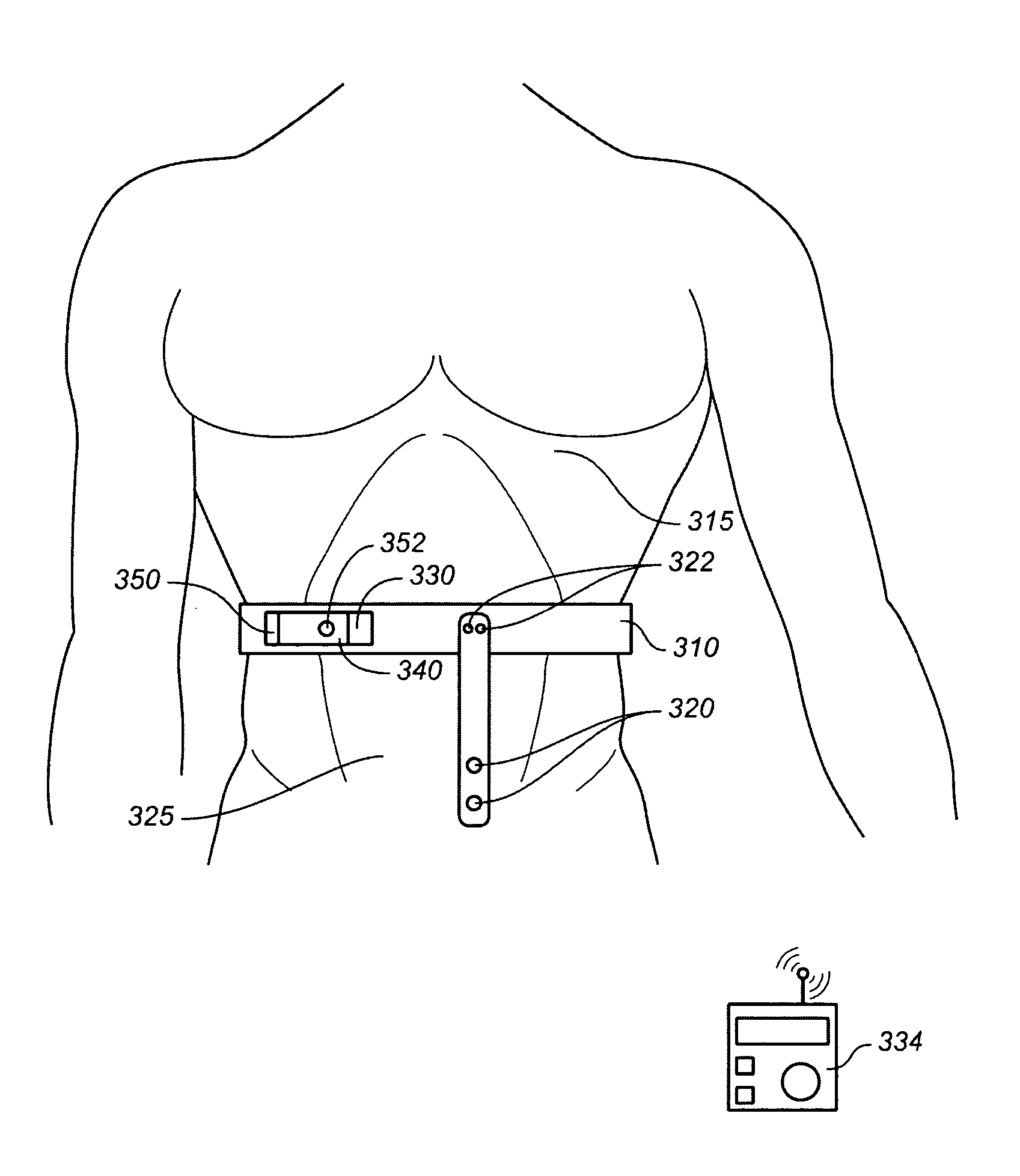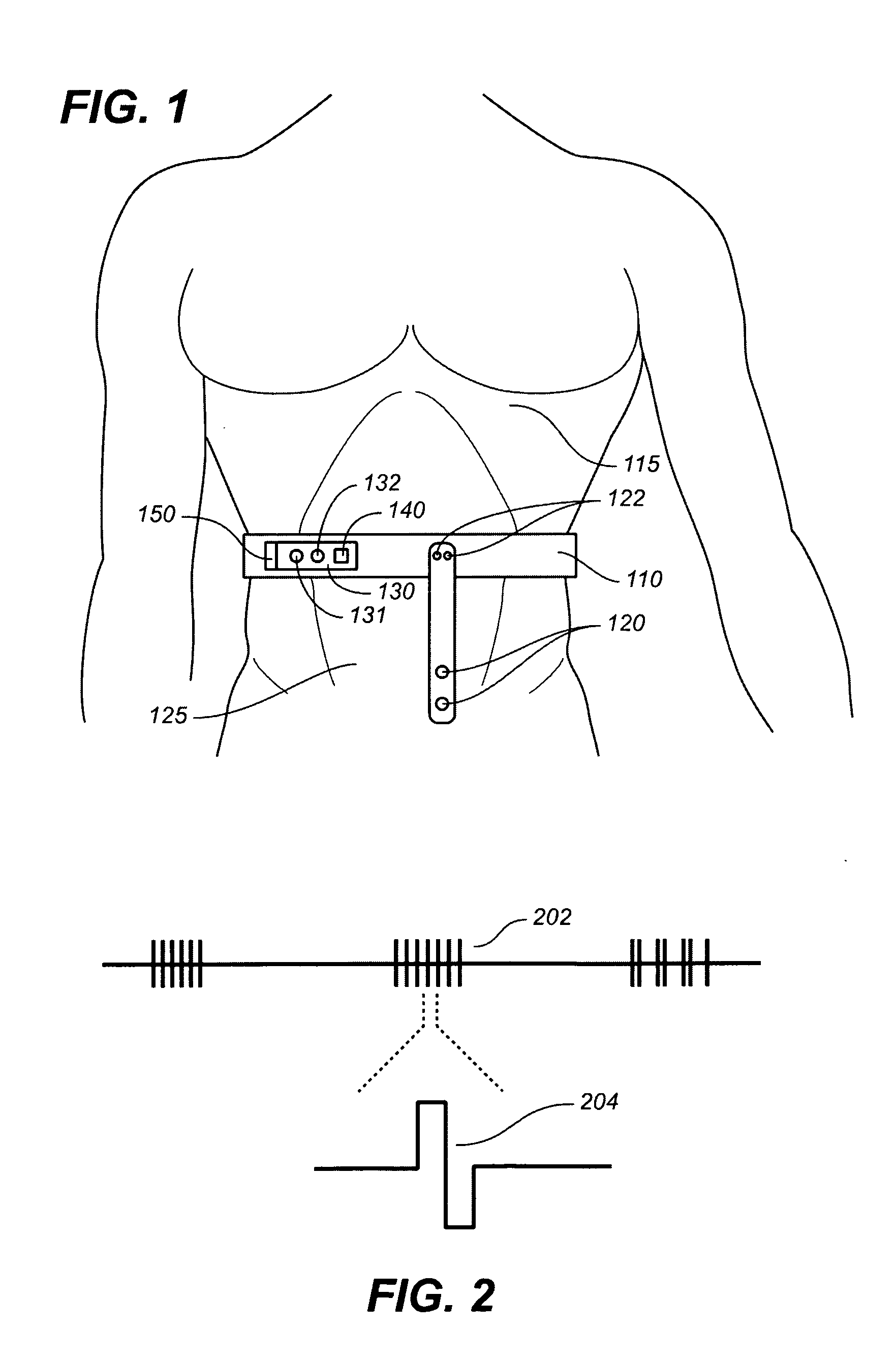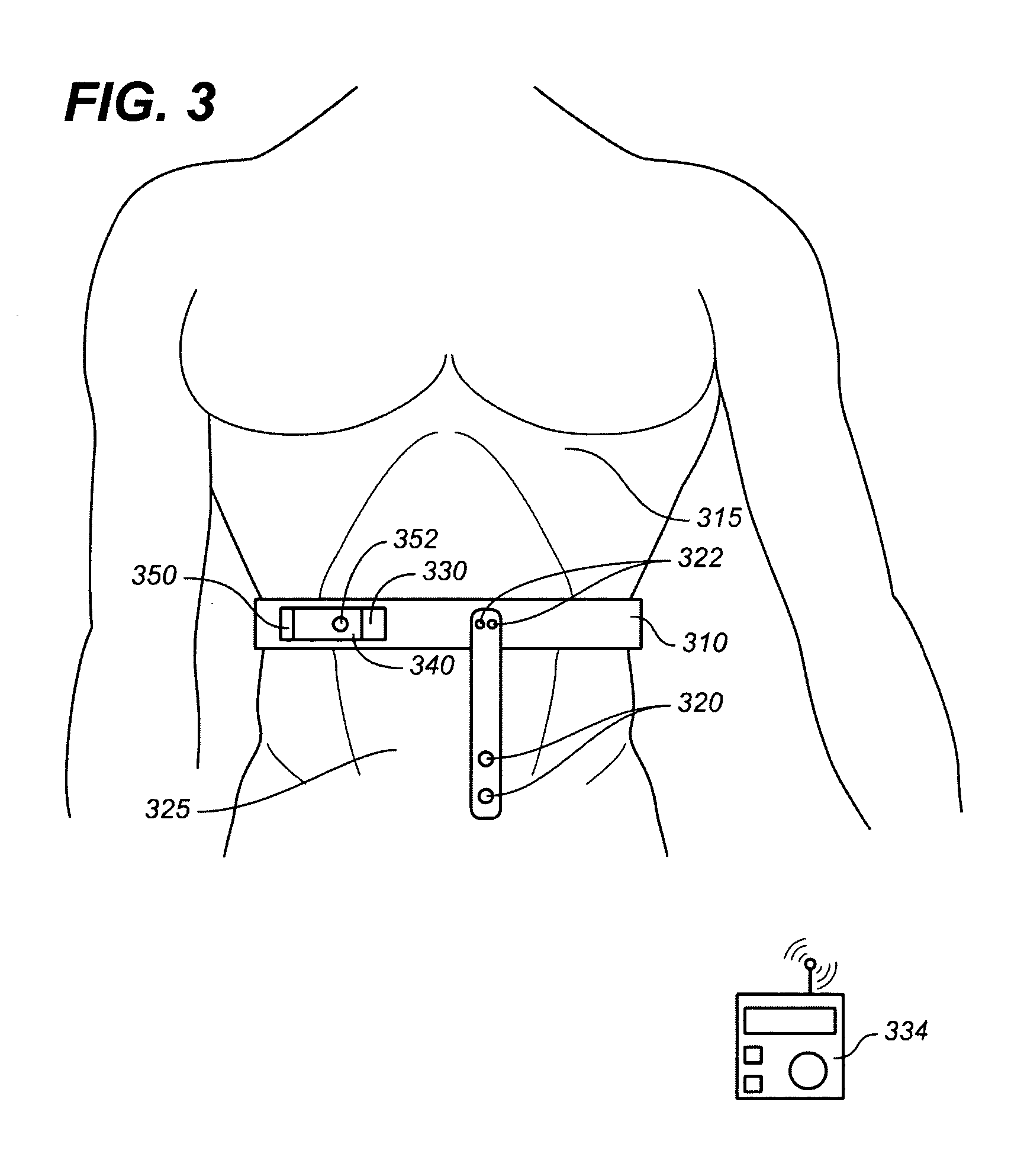Apnea treatment device
- Summary
- Abstract
- Description
- Claims
- Application Information
AI Technical Summary
Benefits of technology
Problems solved by technology
Method used
Image
Examples
Embodiment Construction
[0009] A simple embodiment of the invention is shown if FIG. 1. A belt 110 is affixed around a patient's torso 115. Electrodes 120 extend down to the patient's abdomen 125, and are secured over one or more of the motor points of the abdominal muscles. The electrodes 120 may be of a number of different technologies including metal foil requiring that the patient apply gel, or may be pre-gelled, or may be percutaneous. The electrodes 120 may be disposable, and may be connected to the belt 110 by electrically conductive snaps 122. The electrodes may be secured to the patient by a number of techniques including adhesive, tape, or the compression supplied by the belt 110. The belt 110 includes a control panel 130. The control panel 130 has rotary switches (131, 132) to allow adjustment of the stimulation rate and intensity respectively. The intensity may be set to “zero” to give the patient the opportunity to turn the device off. In the embodiment shown, the rotary switches 131, 132 are ...
PUM
 Login to View More
Login to View More Abstract
Description
Claims
Application Information
 Login to View More
Login to View More - R&D
- Intellectual Property
- Life Sciences
- Materials
- Tech Scout
- Unparalleled Data Quality
- Higher Quality Content
- 60% Fewer Hallucinations
Browse by: Latest US Patents, China's latest patents, Technical Efficacy Thesaurus, Application Domain, Technology Topic, Popular Technical Reports.
© 2025 PatSnap. All rights reserved.Legal|Privacy policy|Modern Slavery Act Transparency Statement|Sitemap|About US| Contact US: help@patsnap.com



